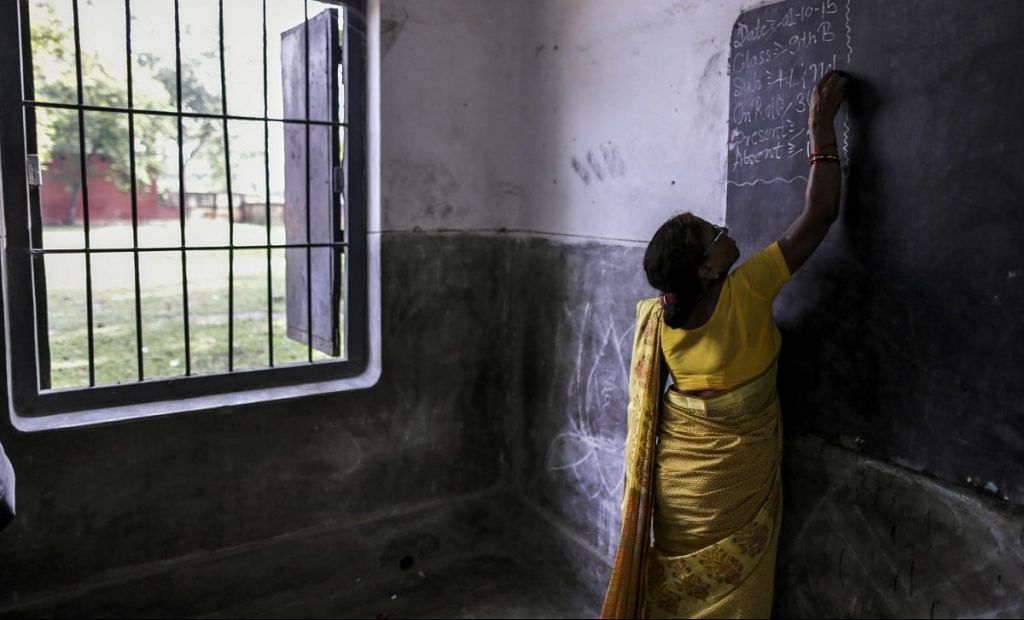Annual HRD report shows that OBCs outdo their quota; Muslims and other minorities better represented than STs.
New Delhi: More than half of the faculty members in the country’s higher educational institutions are from the general category, with those from the Scheduled Castes (SC) and Scheduled Tribes (ST) being the worst represented.
The All India Survey for Higher Education (AISHE) for 2017-18, released by the Ministry of Human Resource Development (HRD) Friday, shows there are 12,84,000 teachers in various higher education institutions as of 2017-18.
Of these, 56.8 per cent of teaching staff are from the general category, 8.6 per cent are Scheduled Caste, while Scheduled Tribes are a mere 2.27 per cent.
This is for the first time that the HRD ministry has conducted a detailed survey on the number of teachers in the country.
The poor Dalit and tribal representation is all the starker as the University Grants Commission (UGC) mandates reservation of 15 per cent for SCs and 7.5 per cent for STs. In effect, the sanctioned strength of SC and ST faculty has not been achieved.
The ST representation is worse off than that of Muslims and other minorities, who are 5.3 per cent and 9.4 per cent of the total teaching faculty respectively.
In contrast, the Other Backward Castes (OBCs) are 32.3 per cent of the total number of faculty in the country. This is above their reservation of 27 per cent.
UGC circular under the scanner
The data only deepens the worries of the teacher community regarding the new UGC circular on hiring department-wise in the reserved category.
The circular, which has now been challenged in the Supreme Court, directed institutions to hire reserved faculty by calculating a department as a unit instead of the whole institution. There were concerns that the new system would reduce the number of reserved category teachers across universities.
The circular has, however, now been put on hold as the matter is in the court.
Dalit rights activist Ashok Bharti says the bias against SCs and STs begins at the school level and reaches the higher institutions. “SCs and STs face discrimination at the level of the school itself. By the time they come to higher education, there is hostility towards them. When people in the education system itself are hostile, how will they get jobs?” he asks. “Another issue is that universities and departments are affected by a high scale of nepotism. Except the law, nothing is on the side of those from the reserved category.”
Sociologist Vivek Kumar, who teaches at JNU and works actively on Dalit rights, said the government should bring out a white paper on why there are lesser Dalit and tribal teachers. “This is not just about the education sector. The situation is the same in the judiciary, bureaucracy, industry and civil society, where people from reserved categories are underrepresented. There is no use of just the finding. The government should bring out a white paper on why this situation has occurred? Is the government not able to find suitable candidates? Or does it lack the intention?” Kumar asked.
Closing gender gap
The data also shows that men continue to be better represented than women in teaching jobs in higher education. Of the total such teachers in the country, 58 per cent are male, with women making up the remaining 42 per cent. In effect, for every 100 male teachers, Indian institutes have 72 female teachers.
The worst gender offender is Bihar, where 79.1 per cent of total teachers are male. Women make up just 20.9 per cent of the teachers.
Colleges have performed better than universities in achieving gender parity. While there are 43 per cent female teachers at the college level, their percentage at the university level is 36.4 per cent.
The data also shows that India does not have faculty at the senior level. It found that close to 70 per cent of the faculty are either assistant professors or lecturers, the entry or lower levels.
